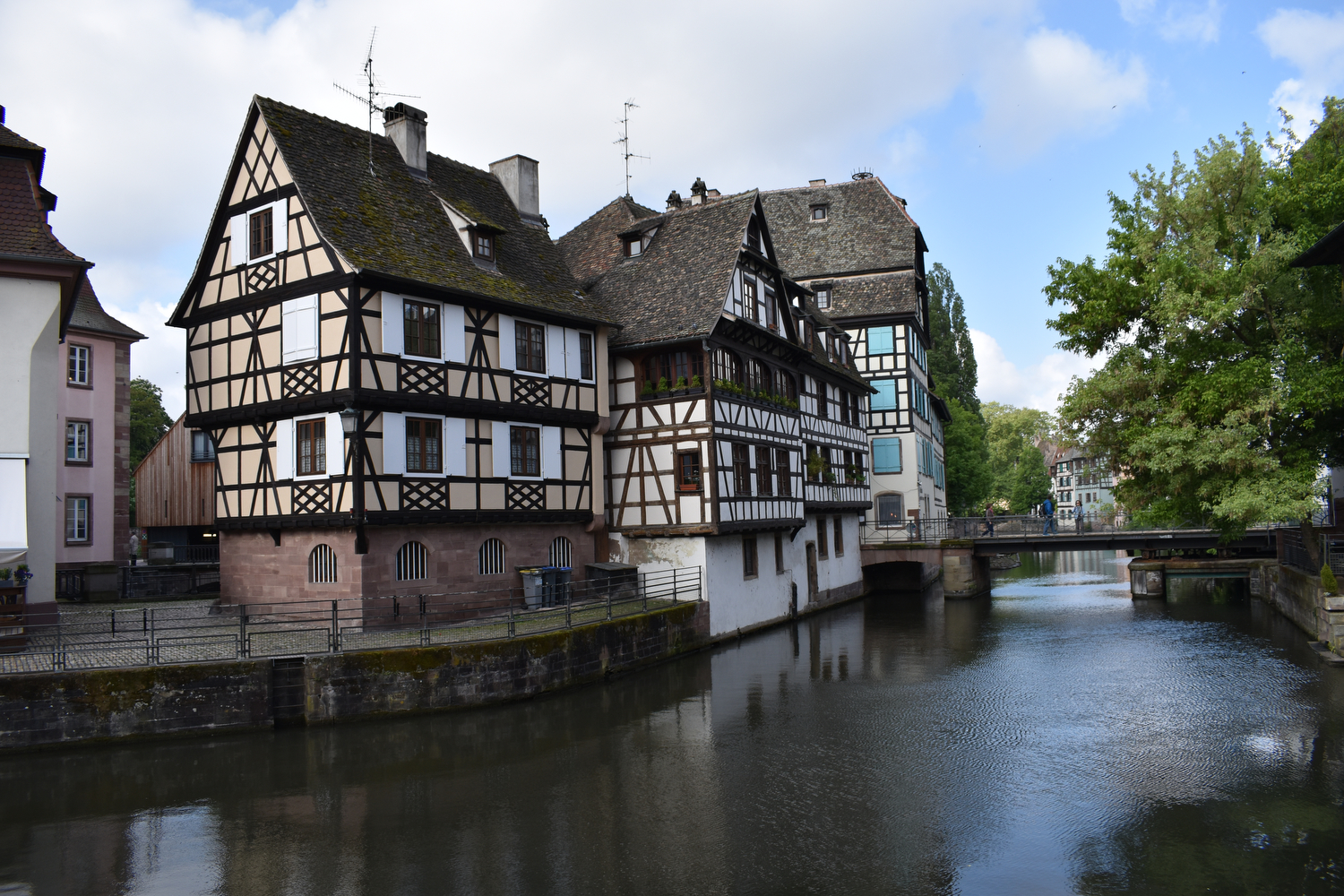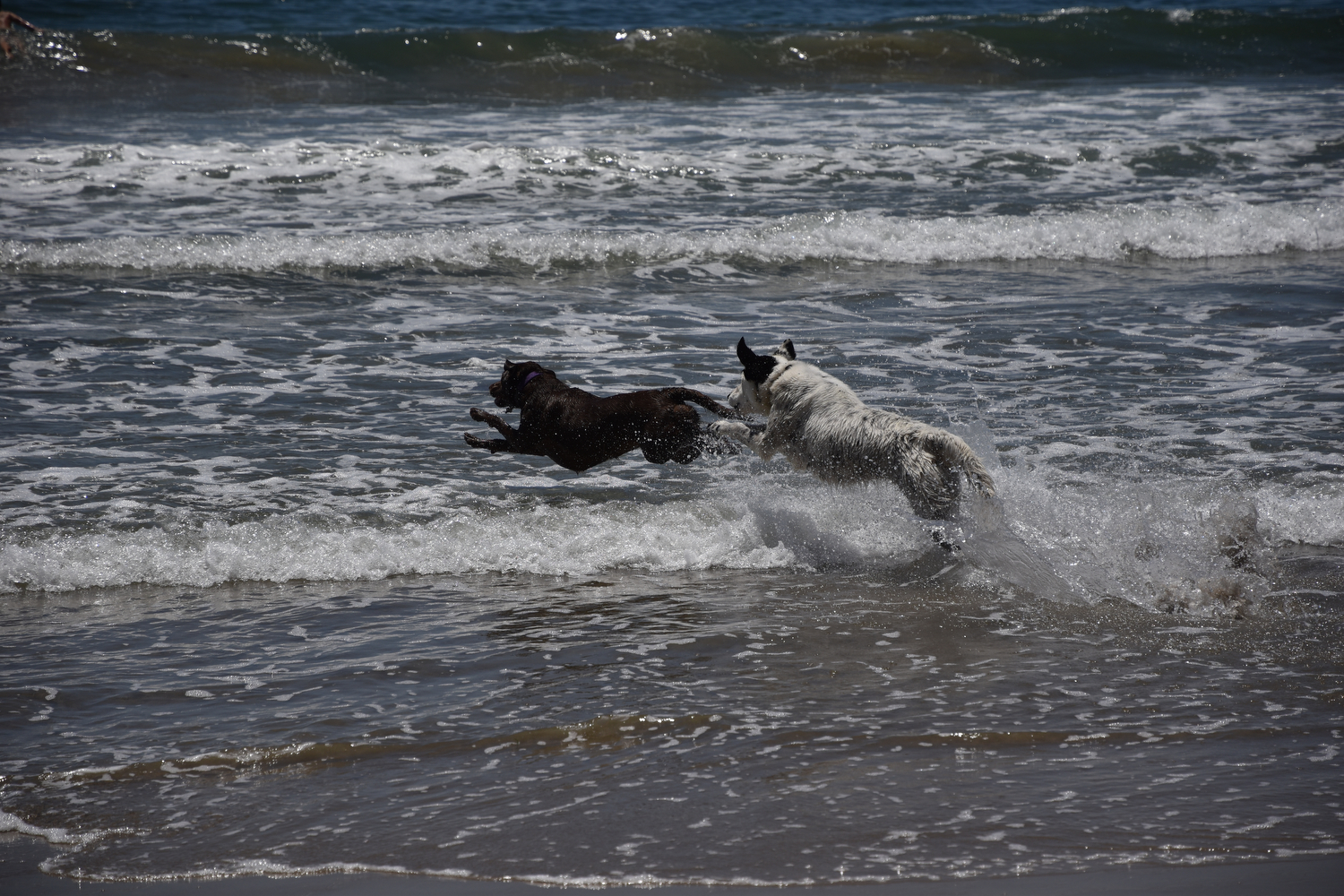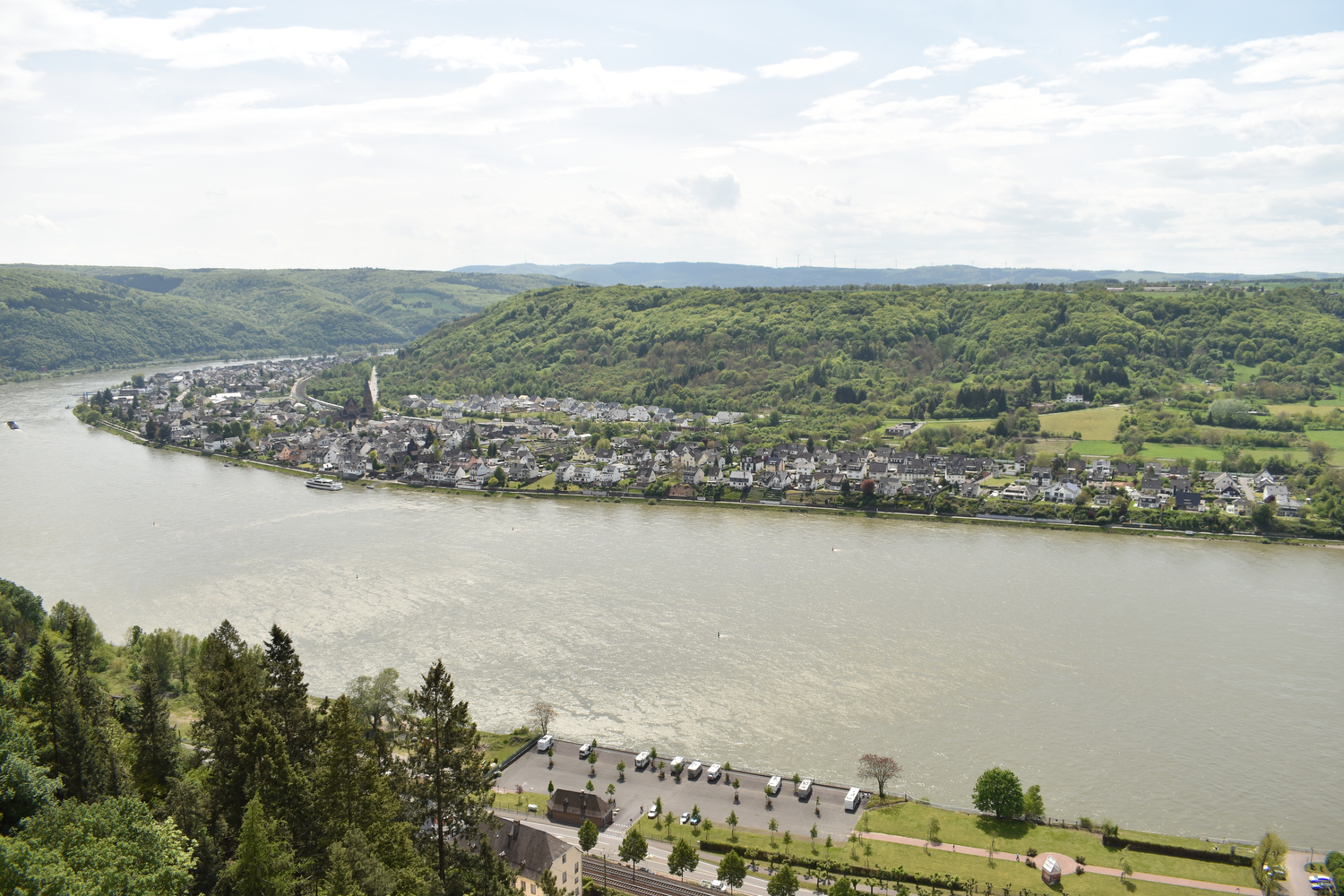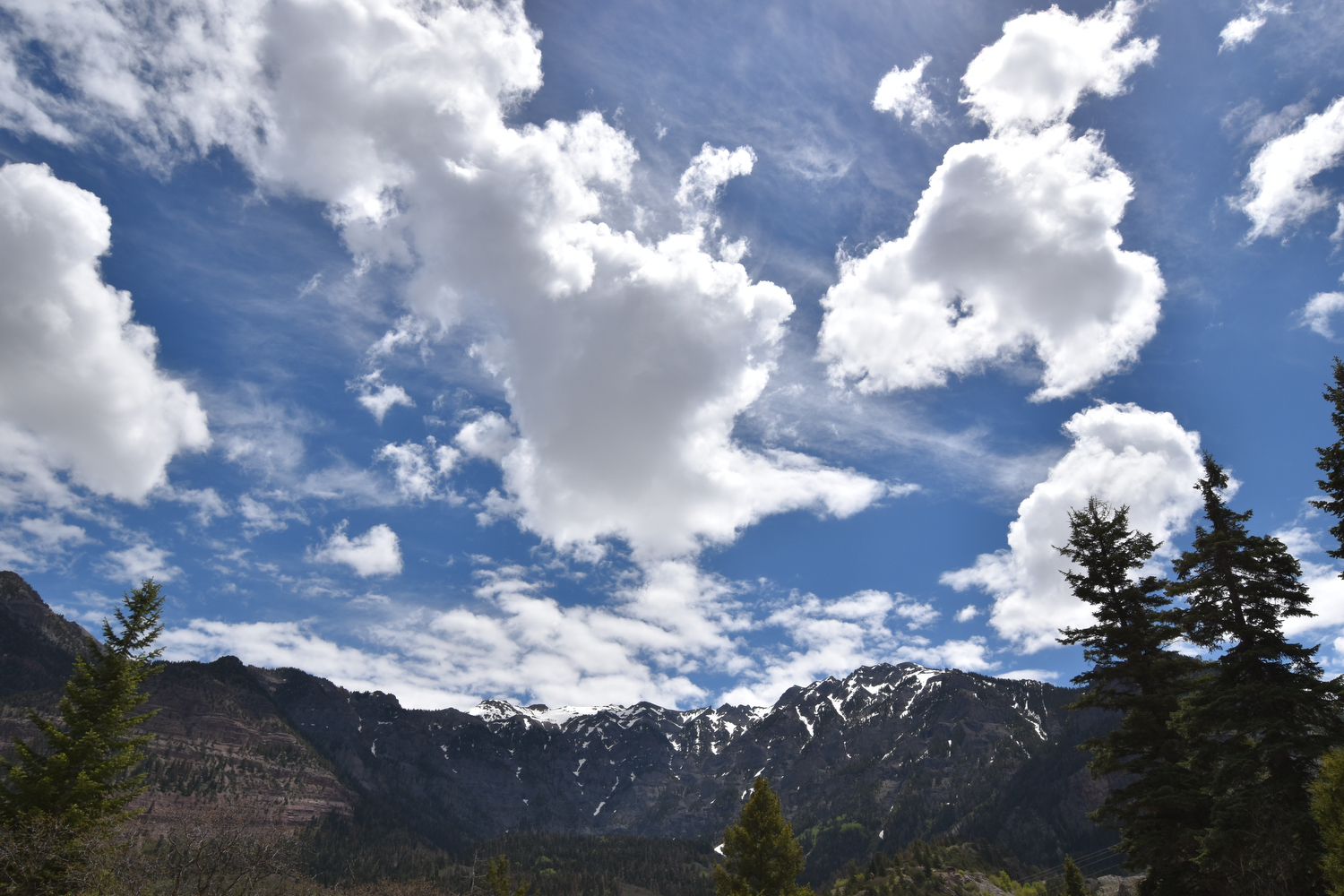“Nikon’s entry-level D5600 still shoots impressive images for the right price.”
- Very good 24MP stills
- Fast autofocus
- Bluetooth (SnapBridge)
- Superior battery life
- Small, lightweight body
- Contrast-detection-only live view AF
- Video limited to 1080p/60
- Most specs unchanged from D5500
Recent announcements in the camera world have made us feel like we’re hanging out on Manhattan’s posh Fifth Avenue. Sony showed off its most expensive full-frame mirrorless camera yet, the $4,500 A9, Leica stunned with the $1,950 TL2, and even Apple has gotten in on the action by partnering with the Red Digital Cinema Company to be the exclusive seller of the $15,000 Raven camera kit. Yet, not everyone has the type of money required for these headline-grabbing cameras, and most don’t need what they offer, anyway.
That’s why we had fun using the affordable — and quite good — Nikon D5600, an entry-level, 24-megapixel DSLR geared for those who want a nice, responsive camera that won’t give you a heart attack when your credit card bill arrives. Starting at $699 (body only), the D5600 is a slightly tweaked version of the two-year-old D5500, a camera we liked. In our Nikon D5600 review, we’ll get into what’s new and different, and see if this is a worthy upgrade.
Design and usability
There are no surprises here: the D5600 not only looks similar to the D5500 that precedes it (which is still available), but it also shares the core components. It’s an all-black, compact, lightweight, easy-to-hold interchangeable lens camera with a comfortable grip that will feel familiar to any photographer who has shot with Nikon’s entry-level DX series cameras before.
The D5600 is a responsive camera that won’t give you a heart attack when your credit card bill arrives.
The body measures 4.9 x 3.8 x 2.8 inches (same as the D5500) and weighs just over a pound at 16.4 ounces with the battery — heavier than competing mirrorless models, but the upside is battery life is rated at 970 shots. That’s impressive for any camera, but is a huge step above the mirrorless competition, where the longest lasting cameras struggle to make half that.
Of course, in the real world the weight of the camera also depends on the lens attached. We used two solid zooms for our review, the 10-24mm f/3.5-4.5G ED ($899) and 16-80mm f/2.8-4E ED ($1,069), as well as a 35mm f/1.8G ($200).
Both of the lenses are heftier than the standard 18-55mm kit lens (which we’ve used before), but we’ve never been pleased with that kit lens’s image quality. While you can get a good deal on the kit, our recommendation is to purchase the camera body-only and splurge on a higher-end lens. The D5600 is a strong performer, but any camera is only as good as the glass in front of it.
As an entry-level DSLR, the D5600 retains the pop-up flash that has slowly been disappearing on higher-end Nikons of late. The optical viewfinder is a pentamirror design with 95-percent coverage, compared to the brighter, larger, and 100-percent coverage of pentaprism viewfinders found in higher-end DSLRs. On the back is an articulating, touch-enabled 3.2-inch LCD screen that is par for the course for this class of camera and the same as the screen found on the D5500.
If you opt for the body-only variant, you’ll find little more than the camera, battery, and wall charger in the box. You’ll need to visit the Nikon website to download the full manual if you want it. We also recommend picking up the SnapBridge app for iOS or Android devices, which lets you share images from the D5600 straight to your phone.
Performance
The D5600 and the D5500 are the same camera when it comes to output — you can read our D5500 review and it would still be applicable to the D5600. Although the D5600 uses the same 24.2-megapixel APS-C (DX-format) sensor and Expeed 4 processor as the D5500, it has some some performance improvements. These include Bluetooth Low Energy connectivity via the aforementioned SnapBridge app that can maintain a constant connection to your phone to automate the image transfer process.
The vast majority of specifications are unchanged over the D5500.
We’ll be forward: No digital camera has the seamless Facebook/Instagram sharing of a smartphone, and SnapBridge is a mixed bag. It works, after some fiddling, but setup and use isn’t always as smooth as we would have liked (many users have left negative reviews on both the Apple App Store and the Google Play Store). Camera manufacturers keep trying to make it easier to transfer photos between devices, but they’re just not there yet.
The D5600 also gets a new time-lapse movie mode that shoots a sequence of stills over time and automatically combines them into a video file — a far easier method than how time lapses are traditionally made.
As for image quality, you really can’t go wrong with the D5600 — especially with a quality lens attached. That said, the D5500 was already great. Both cameras use the same sensor and lack an optical low-pass filter, which leads to even sharper results compared to older models with the same resolution.
Video is also the same: Full HD 1080p at up to 60 frames per second. No 4K here, but we weren’t really expecting it at this level, and we don’t think D5600 buyers will mind. So, from an image quality standpoint, there is no reason to upgrade to the D5600 from the D5500, but it’s still one of the best APS-C sensors you can buy.
We tested the camera for an extended period and shot everything from Santa Barbara surfers and their scampering dogs to classic Western vistas using the 10-24mm and 16-80mm, as well as urban scenes with an 18-55mm kit, 35mm, and (briefly) 70-300mm f/4.5-6.3G ED VR ($400). With the former subjects, we really appreciated the 10-24mm wide-angle (a 15-36mm full-frame equivalent field-of-view). This is one of the reasons why we suggest buying a body-only kit and pick your favorite glass. Of course, the cost increase is rather significant, but the better return in image quality is worth the investment.
There isn’t anything really bad about the D5600, but it also doesn’t blow competing models out of the water.
The D5600 uses Nikon’s 39-point autofocus system with nine cross-type points — again, the same as the D5500. Continuous shooting speed tops out at 5 frames per second (fps), which is sufficient for grabbing nice action shots. It falls short of Nikon’s DX flagship, the D500, with its 193-point AF sensor and 10-fps burst mode, but the D5600 should easily cover the needs of the casual user. Even though the D5600 costs one-third of the D500’s list price, most people wouldn’t be able to tell from image quality alone.
Using live-view is very easy and the flip-out, 3.2-inch vari-angle LCD touchscreen held up, even on sun-filled beaches, but Nikon still relies on slow contrast-detection AF in live-view. It’s an improvement over earlier models that offered live-view, but still a far cry from the blissfully smooth Dual Pixel AF system found on the Canon EOS Rebel T7i. The optical viewfinder has a status display that’s bright and easy to read.
Besides SnapBridge, the D5600 gains one improvement over the D5500: You can pinch, swipe, and zoom photos on the touchscreen using your fingers, much like a smartphone. Like Snapbridge, it’s a nice addition, but hardly worth a headline.
Unless you’re outputting the footage to a new 4K UHD TV, 1080p resolution is satisfactory. We appreciate the microphone input, which we used to capture better audio that what the onboard stereo mics can. As with most consumer cameras, we did encounter instances of rolling shutter, and the camera did have to hunt for focus occasionally, but nothing like older Nikon DSLRs. But for casual, slow-moving scenes, the D5600 is more than capable. If video is really high on your shopping list, the Sony A6300 or a Canon DSLR with Dual Pixel AF will serve you much better.
ISO sensitivity is unchanged at 100-25,600. That won’t compete with the likes of the Nikon D7500 and D500, but real-world performance is certainly decent. In our tests, files were clean and noise-free to ISO 2,000 and then very gradually degraded as we moved through the settings. Even ISO 10,000 was usable, but here the built-in noise reduction made edges a bit fuzzy. Of course, reducing noise reduction or shooting in RAW will avoid this, but expect more visible noise if you do this.
Overall, there really isn’t much that has changed since the D5500. Nikon is making a big deal out of SnapBridge, and the latest camera firmware (ver. 1.2) apparently improves performance. We have to admit, once the system is set up and turned on, it’s kind of cool for images to flow effortlessly from the D5600 to a Samsung Galaxy S8 in our pocket, but we don’t necessarily want every image to transfer to our phone. The D5500 already had standard Wi-Fi image sharing, so it’s not as if SnapBridge and Bluetooth LE make for a world-changing innovation here.
Warranty
The warranty is good for one-year against defects in material and/or workmanship.
Our Take
If you’re ready to move to an interchangeable lens camera from an older point-and-shoot or a phone, the Nikon D5600 is certainly a solid choice. It’s easy to operate and still image quality is truly excellent — at least, when paired with a good lens. Videos, although limited to 1080p, are also solid. However, a better name for this camera may have been “D5500S,” as the vast majority of its specifications are unchanged over its predecessor. SnapBridge, new touch gestures, and time-lapse mode simply aren’t enough to warrant an upgrade for current D5500 users.
We will say that the D5600 makes a solid travel camera. For a DSLR body, it’s small and lightweight, and when packed with smaller lenses, it’s easy to carry. For a recent trip, we were able to fit the camera, the 18-55mm and 35mm lenses, and a few accessories including a microphone, handgrip, and small LED light, inside a small camera bag, which fit inside a backpack. We didn’t feel bogged down on our walking tours, and loved the ability to capture both terrific photos and Full HD video.
There are certainly smaller cameras you can bring, like the GoPro Hero5 Black we used, but the D5600 didn’t hinder our experience. The only thing we wished we had was a longer zoom lens, but it was a sacrifice we made in exchange for a lighter, less cumbersome camera.
Are there better alternatives?
Yes. The Canon EOS Rebel T7i is perhaps the best entry-level DSLR we’ve ever tested. It matches the D5600 on resolution, but gains one extra frame-per-second in burst mode, has a 45-point (all cross-type) AF system, and uses a much superior live-view AF system thanks to Canon’s Dual Pixel tech. Now, if you read the technical sensor analyses out there, the D5600 does have a slight edge in image quality, and it’s about $50 cheaper than the Canon in both body-only and kit configurations, but unless you’re already roped into the Nikon camp, the T7i is probably the better buy for new users.
We would also list the D5500 as a suitable alternative, as generally older models drop in price after new models are released, but for whatever reason, that’s not the case here. Nikon lists both cameras at exactly the same price, although you can find some great deals on refurbished D5500s — while supplies last.
How long will it last?
Nikon is fairly predictable, so expect the D5600 to be around for at least two years before being replaced, but the camera can certainly last longer than that should you choose to hold onto it. Unlike more expensive models, the D5600 lacks weather-sealed qualities. However, we used the D5600 under light drizzle during more than one occasion, and we didn’t encounter any issues.
Should you buy it?
Yes, if you are looking to trade up an older Nikon DSLR and you own some Nikkor lenses. The D5600’s picture quality is very good and you’ll be really happy with the results this camera delivers. We would still recommend it, however, for non-Nikon users, the D5600 fails to impress compared to the competition. SnapBridge is nice to have, but hardly a make-or-break feature. There isn’t anything really bad about the D5600 — in fact, we quite liked using it — but this small evolution of an existing camera doesn’t blow competing models out of the water.
















